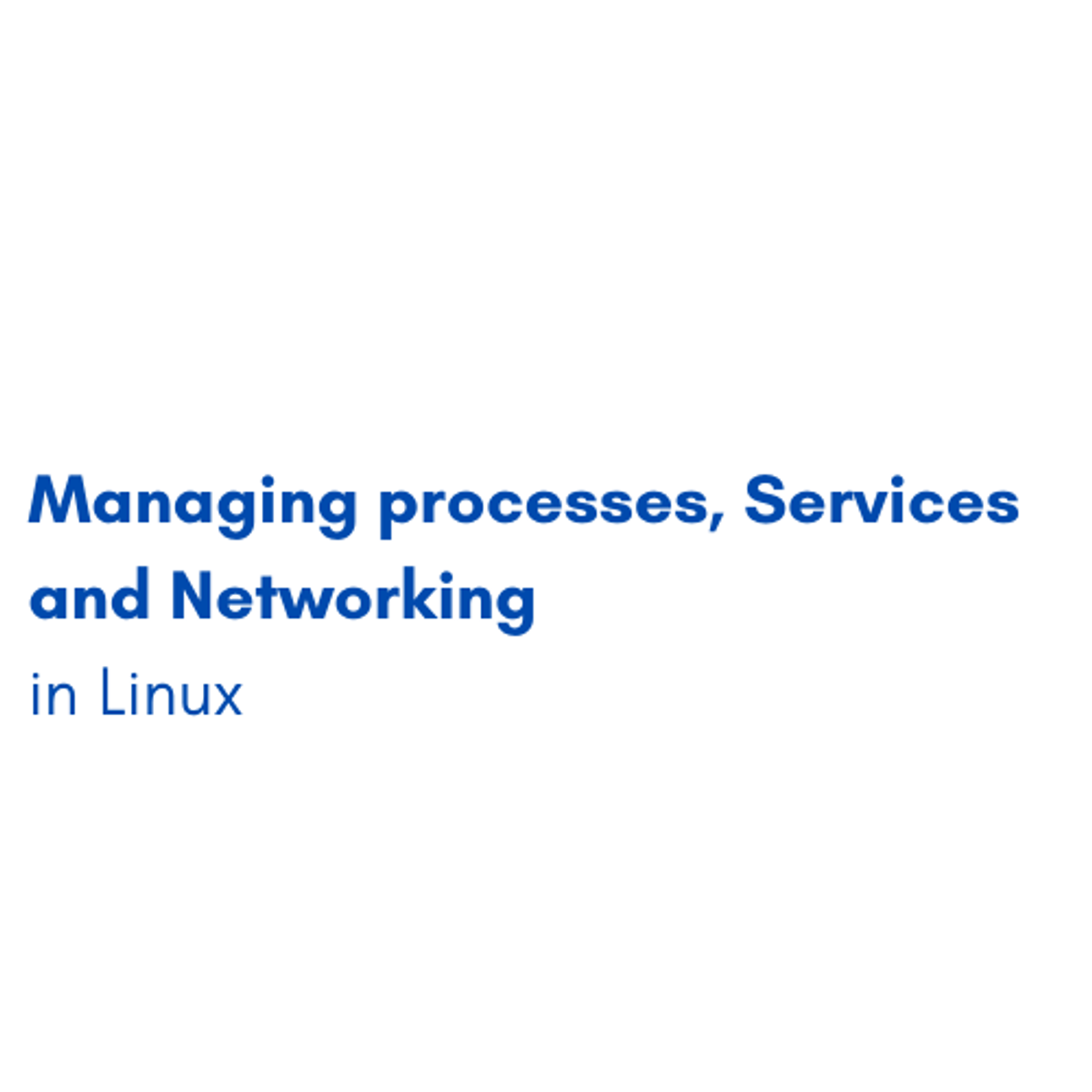Back to Courses









Networking Courses - Page 2
Showing results 11-20 of 135

Palo Alto Networks: VM-Series Advanced Deployment
This is a self-paced lab that takes place in the Google Cloud console. In this lab you will use Terraform to deploy 2 VM-Series firewalls that secure ingress/egress traffic from 2 spoke VPCs, using internal load balancers as next hop.

Managing processes, Services and Networking in Linux
By the end of this project, you will be able to monitor and manage your network, services and processes using linux. you will be able to identify RedHat and write basic commands in the shell. Moreover, you will be able to list services and daemons. Finally, you will be able to manage RedHat enterprise linux networking.
The goal of this project is to learn basics about linux in the first task you will be able to open the terminal and know what is the shell and some basic commands

Write basic ansible playbooks
In this 1-hour long project-based course, you will learn how to setup an inventory of hosts which, for our case here, will only contain one hosts, which is the local host. You will learn how to run Ansible ad-hoc commands. Then you will learn what an Ansible playbook looks like, and how to write a playbook to perform basic operations. You will write playbooks to run file tasks and to setup software.
Note: This course works best for learners who are based in the North America region. We’re currently working on providing the same experience in other regions.

Deploy Node.js Express Application in App Engine
This is a self-paced lab that takes place in the Google Cloud console.
In this lab, you will learn how to create a Node.js Express application on Google App Engine. Then you will learn how to update the code without taking the server down.

Connecting to Devices and Networks
Practice managing devices and networks without installing anything!
This course is designed for learners with no technical experience, providing a solid foundation of connecting to devices and networks. Learners will gain hands-on practice on an Ubuntu system that can be easily transferred to other Unix-based operating systems. The modules in this course cover managing devices and partitions, basic networking tools and name resolution, and securely transferring data over networks to create backups.
To allow for a truly hands-on, self-paced learning experience, this course is video-free. Assignments contain short explanations with images and runnable examples with suggested edits to explore examples further, building a deeper understanding by doing. You'll benefit from instant feedback from a variety of assessment items along the way, gently progressing from quick understanding checks (multiple choice, fill in the blank, and un-scrambling code blocks) to small, approachable exercises that take minutes instead of hours.

Deploy Microsoft SQL Server to Compute Engine
This is a self-paced lab that takes place in the Google Cloud console.
In this lab you will learn how to create a virtual machine with Microsoft SQL Server installed. You’ll also create a Windows user and password and learn how to connect to the Windows Server via remote desktop.

Build and Execute MySQL, PostgreSQL, and SQLServer to Data Catalog Connectors
This is a self-paced lab that takes place in the Google Cloud console. In this lab you will explore existing datasets with Data Catalog and mine the table and column metadata for insights.

Securing Cisco Switches with Port Security
Welcome to the CCNA 1.5: Securing Cisco Switches with Port Security. This project is the fifth in the CCNA learning series that is designed to help you acquire the hands-on skills required to pass the CCNA certification exam.
In this 2-hour guided project, you will secure Cisco Local Area Networks by disabling unused switch ports, implementing different port security modes, and verifying port security settings on Cisco switches.

Junos Routing, Operations, and Maintenance
In this course, we will explain basic routing concepts including routing policy, routing and forwarding tables, routing instances, and Junos OS routing configuration basics. This course will also explain the concepts and configuration basics of user authentication, the various types of interfaces found on network devices, archiving configurations, configuring and analyzing system logging and tracing, and configuring SNMP for collecting and organizing information about managed devices. Other operational monitoring and maintenance tasks will be explored, including password recovery and how to upgrade Junos OS.

Using Agones to Easily Create Scalable Game Servers
This is a self-paced lab that takes place in the Google Cloud console.
In this lab you will install Agones on a Kubernetes cluster, then create a simple UDP game server with Agones.
Popular Internships and Jobs by Categories
Find Jobs & Internships
Browse
© 2024 BoostGrad | All rights reserved